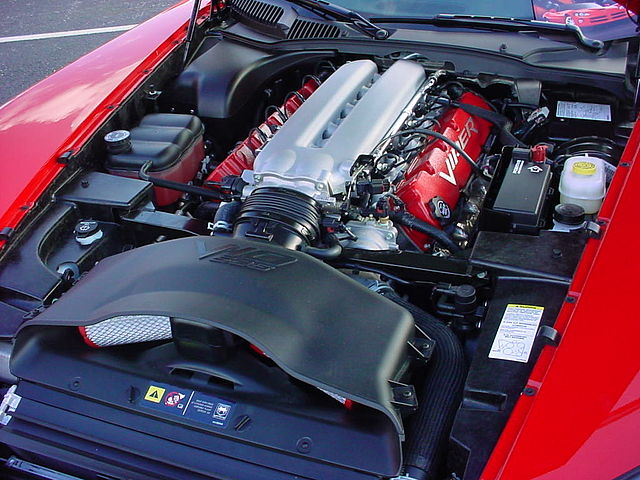V10 engine
piston engine with ten cylinders in vee configuration From Wikipedia, the free encyclopedia
A V10 engine, often just called a V10, is an internal combustion engine with 10 cylinders. The engine has five cylinders on each side called banks. The two banks form a "V"-shaped angle. All ten pistons turn a common crankshaft. A V10 engine can be powered by different types of fuels, including gasoline, diesel and natural gas.
Road cars

Until recently, V10s had rarely been used for road cars. A V12 runs smoother and is only a little harder to build. A V8 is easier to build and costs less to run. New technology has made the use of V10 engines more practical.
Dodge designed a V10 for use in trucks. The engine was revised and used in the Dodge Viper.[1] Ford developed a heavy-duty V10 engine for use in their trucks.
European car builders later adopted the V10 configuration. High power V10 engines were put into supercars from Lamborghini and Porsche. BMW and Audi then added V10s to their mid-range cars. Volkswagen developed a V10 turbodiesel engine.
Racing
The largest use of the V10 engines has been in Formula One racing. Alfa Romeo made the first modern Formula One V10 in 1986, but it was never used in a race car.[2] Later the V10 was introduced by Honda and Renault before the 1989 season. After turbochargers were banned, the V10 engine was often used. V10 engines were the only type used from the 1998 season. V10s were banned for the 2006 season and Formula One teams started using V8 engines.
There are other cars with V10 engines in auto racing. The most common is the Judd engine.
References
Wikiwand - on
Seamless Wikipedia browsing. On steroids.